Australian Mathematics Competition - 2020 - Senior years 11 -12 Questions and Solutions
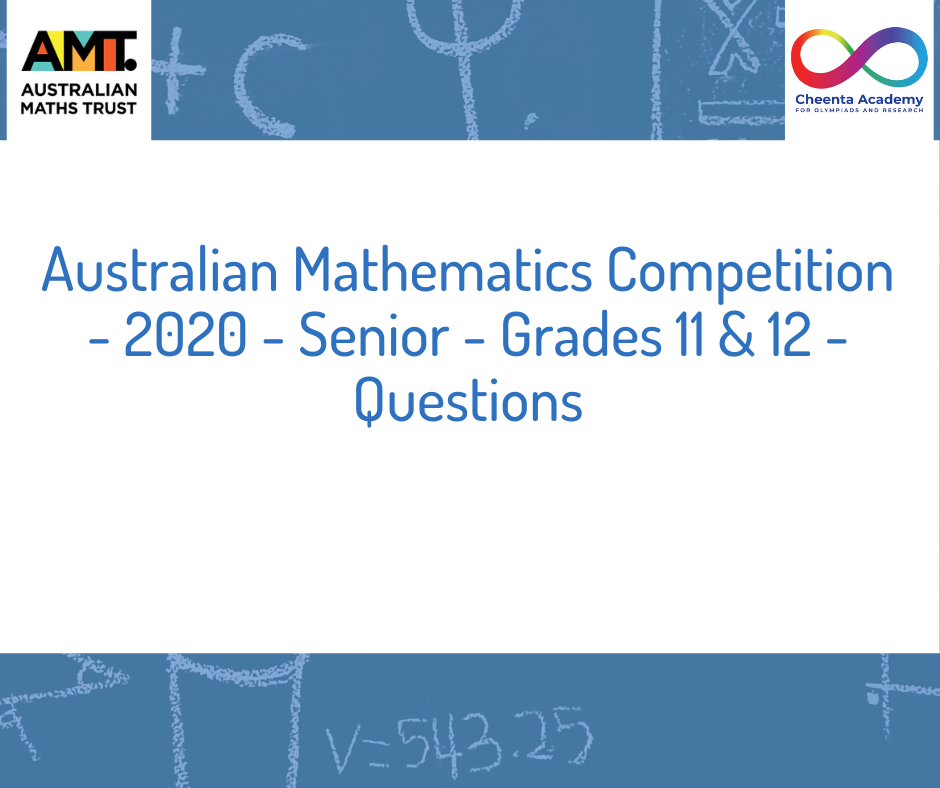 Join Trial or Access Free Resources
Join Trial or Access Free Resources Join Trial or Access Free Resources
Join Trial or Access Free ResourcesWhat is the value of \(2020 \div 20\) ?
(A) 2000
(B) 2040
(C) 11
(D) 101
(E) 1001

In the diagram provided, find the sum of \(x\) and \(y\).
(A) 30
(B) 75
(C) 95
(D) 105
(E) 180
Evaluate \(\sqrt{7+18 \div\left(10-1^5\right)}\)
(A) \(\frac{5}{3}\)
(B) 9
(C) 3
(D) 5
(E) \(\frac{1}{27}\)
Sebastien is thinking of two numbers whose sum is 26 and whose difference is 14. The product of Sebastien's two numbers is
(A) 80
(B) 96
(C) 105
(D) 120
(E) 132
If \(\frac{4}{5}\) of \(\frac{5}{6}\) of \(\frac{\star}{7}\) of \(\frac{7}{8}\) is equal to 1 , then the value of \(\star\) is
(A) 6
(B) 8
(C) 10
(D) 12
(E) 14
A square garden of area \(10000 \mathrm{~m}^2\) is to be enlarged by increasing both its length and width by \(10 \%\). The increase in area, in square metres, is
(A) 1000
(B) 2000
(C) 2100
(D) 2400
(E) 4000
Given that \(f(x)=2 x^2-3 x+c\) and \(f(2)=6\), then \(c\) is equal to
(A) 4
(B) 3
(C) 6
(D) 8
(E) 12

An equilateral triangle is subdivided into a number of smaller equilateral triangles, as shown. The shaded triangle has side length 2. What is the perimeter of the large triangle?
(A) 24
(B) 27
(C) 30
(D) 33
(E) 36
If \(a \neq 0\), then \(\frac{a^{x+y}}{a^x}\) is equivalent to
(A) \(a^y\)
(B) \(\frac{1}{a^y}\)
(C) \(-a^y\)
(D) \(a^{1+y}\)
(E) \(1+a^y\)
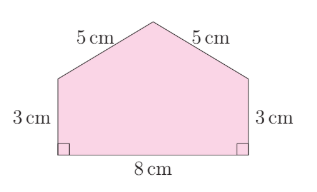
What is the area of the pentagon shown?
(A) \(32 \mathrm{~cm}^2\)
(B) \(36 \mathrm{~cm}^2\)
(C) \(42 \mathrm{~cm}^2\)
(D) \(56 \mathrm{~cm}^2\)
(E) \(64 \mathrm{~cm}^2\)
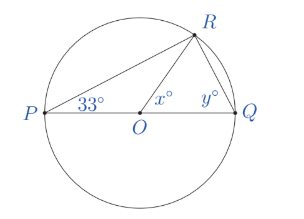
In the diagram, \(P Q\) is a diameter of the circle, \(O R\) is a radius, and \(\angle O P R=33^{\circ}\).
The value of \(x+y\) is
(A) 99
(B) 113
(C) 115
(D) 123
(E) 137

This diagram is composed entirely of semicircles. The diameter of each of the eight smallest semicircles is exactly one-quarter of the diameter of the two biggest semicircles.
What fraction of the large circle is shaded?
(A) \(\frac{9}{16}\)
(B) \(\frac{2}{3}\)
(C) \(\frac{3}{4}\)
(D) \(\frac{1}{2}\)
(E) \(\frac{5}{8}\)
In Paradise, all days are either fine or wet.
If today is fine, the probability of tomorrow being fine is \(\frac{3}{4}\).
If today is wet, the probability of tomorrow being fine is \(\frac{1}{3}\).
Today is Friday and it is fine. I am having a BBQ on Sunday. What is the probability that it will be fine on Sunday?
(A) \(\frac{25}{48}\)
(B) \(\frac{29}{48}\)
(C) \(\frac{2}{3}\)
(D) \(\frac{3}{4}\)
(E) \(\frac{31}{48}\)
Given that \(x\) and \(y\) are both integers and \(2^{x+1}+2^x=3^{y+2}-3^y\), the value of \(x+y\) is
(A) 0
(B) 1
(C) 4
(D) 7
(E) 9
A bag contains exactly 50 coins. The coins are either worth 10 cents, 20 cents or 50 cents, and there is at least one of each. The total value of the coins is \(\$ 10\).
How many different ways can this occur?
(A) 2
(B) 4
(C) 8
(D) 12
(E) 16

A regular hexagon is partially covered by six right-angled triangles, as shown.
What fraction of the hexagon is not covered?
(A) \(\frac{1}{4}\)
(B) \(\frac{1}{3}\)
(C) \(\frac{2}{5}\)
(D) \(\frac{4}{9}\)
(E) \(\frac{1}{2}\)
In a paddock of sheep, there are 4 times as many male sheep as female sheep. In another paddock, there are 5 times as many females as males. When the two flocks of sheep are combined, there are equal numbers of males and females. What is the smallest possible total number of sheep?
(A) 20
(B) 26
(C) 30
(D) 38
(E) 42
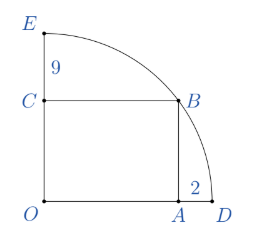
The rectangle \(O A B C\) is drawn in the quadrant of a circle \(O D E\), so that \(A D=2\) and \(C E=9\). What is the radius of the circle?
(A) 11
(B) 13
(C) 15
(D) 17
(E) 20
The minimum value of the function \(f(x)=2^{x^2-2 x-3}\) is
(A) 1
(B) \(\frac{1}{2}\)
(C) \(\frac{1}{4}\)
(D) \(\frac{1}{8}\)
(E) \(\frac{1}{16}\)

Two sides of a regular pentagon are extended to create a triangle. Inside this triangle, a smaller regular pentagon is drawn, as shown. In area, how many times bigger is the larger pentagon than the smaller pentagon?
(A) 4
(B) \(2 \sqrt{5}\)
(C) 5
(D) \(\frac{\sqrt{5}+3}{2}\)
(E) \(\sqrt{5}\)
For \(n \geq 1, s_n\) is defined to be the number consisting of \(n\) consecutive ones, so \(s_1=1\), \(s_2=11, s_3=111\), and so on.
Which one of the following numbers is divisible by 7 ?
(A) \(s_{902}\)
(B) \(s_{903}\)
(C) \(s_{904}\)
(D) \(s_{905}\)
(E) \(s_{906}\)

A circle is inscribed in the quadrilateral \(A B C D\) so that it touches all four sides, as shown. Sides \(A B\) and \(D C\) are parallel with lengths 2 cm and 4 cm , respectively, and sides \(A D\) and \(B C\) have equal length.
What, in centimetres, is the length of \(A C\) ?
(A) \(\sqrt{17}\)
(B) \(2 \sqrt{5}\)
(C) \(\sqrt{13}\)
(D) 5
(E) \(3 \sqrt{2}\)
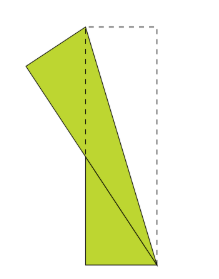
A rectangular sheet of paper that is three times as tall as it is wide is folded along one diagonal, making the pentagon shown.
What is the ratio of the area of this pentagon to the area of the original rectangle?
(A) \(13: 18\)
(B) \(3: 4\)
(C) \(7: 12\)
(D) \(2: 3\)
(E) \(\sqrt{10}: 4\)
Alex writes down the value of the following sum, where the final term is the number consisting of 2020 consecutive nines:

How many times does the digit 1 appear in the answer?
(A) 0
(B) 2016
(C) 2018
(D) 2020
(E) 2021
Three real numbers \(a, b\) and \(c\) are such that
\[
a+b+c=4 \quad \text { and } \quad \frac{1}{a+b}+\frac{1}{b+c}+\frac{1}{c+a}=5
\]
Then, \(\frac{c}{a+b}+\frac{a}{b+c}+\frac{b}{c+a}\) is equal to
(A) \(\frac{3}{2}\)
(B) \(\frac{4}{5}\)
(C) 2
(D) 20
(E) 17

A different integer from 1 to 10 is placed on each of the faces of a cube. Each vertex is then assigned a number which is the sum of the numbers on the three faces which touch that vertex.
Only the vertex numbers are shown here. What is the product of the 4 smallest face numbers?
The coefficients of a polynomial function \(P(x)\) are all non-negative integers. Given that \(P(2)=40\) and \(P(40)=2688008\), what is the value of \(P(3)\) ?

This circle has 18 equally spaced points marked. There are 816 ways of joining 3 of these points to form a triangle.
How many of these triangles have a pair of angles that differ by \(30^{\circ}\) ?
Starting with a \(9 \times 9 \times 9\) cube, Steve mined out nine square tunnels through each face so that the resulting solid shape had front view, top view and side view all the same, as shown.
Going from the original cube to the perforated cube, how much did the surface area increase?

When I drive to school every day, I pass eight traffic lights, each either green, yellow, or red. I find that, because of synchronization, a green light is always followed immediately by a yellow, and a red light is never immediately followed by a red. Thus a sequence of lights may start with GYRY, but not RRGG. How many possible sequences of the eight lights are there?